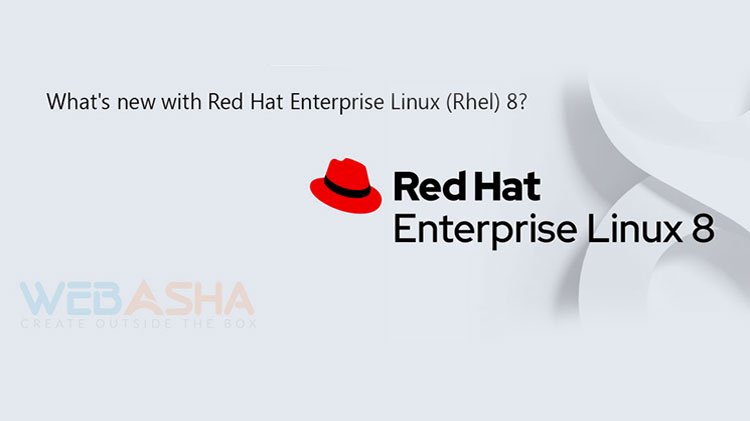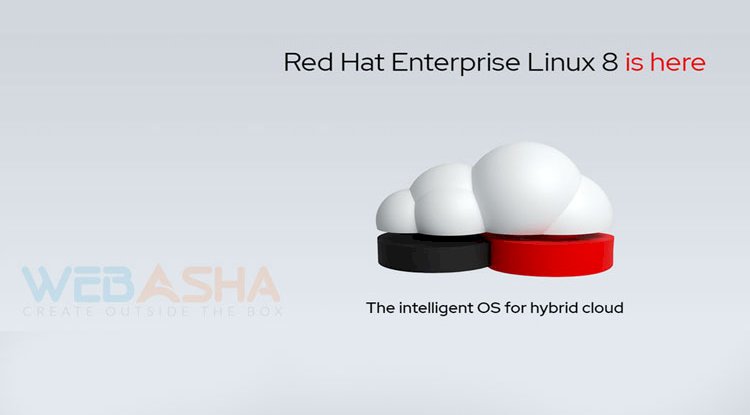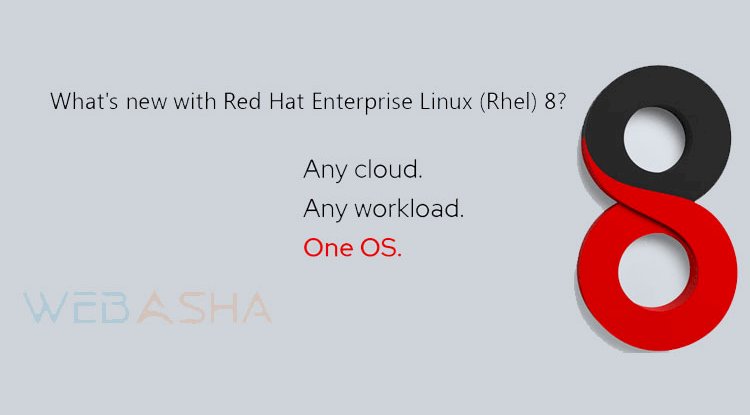What’s new with Red Hat Enterprise Linux (Rhel) 8?
Red Hat Enterprise Linux (RHEL) 8 is based upon the principles of “operational consistency, security, and cloud foundation.” Utilizing kernel 4.18x, RHEL 8 is based on Fedora 28 and will run on Intel/AMD 64-bit processors as well as IBM Power LE, IBM z Systems, and ARM 64-bit Processor.

Improvements in operational consistency
- RedHat has sought to reduce complexity in RHEL 8 OS, which comes with ten guaranteed years of enterprise support. Their model involves repositories for the base OS(operating system) as well as application streams for flexible lifecycle options, which offer multiple versions of databases, languages, various compilers, and other tools to help facilitate the use of Red Hat Enterprise Linux (RHEL) for business models.
- Build-in defaults in Red Hat Enterprise Linux (RHEL) 8 include tuned profiles for database options (ready-to-go options out of the box) and ansible system roles to provide a common configuration interface (ensuring standardization and reliability)
- The Red Hat Enterprise Linux (RHEL) 8 YUM package manager is now based on the Dandified Yum (DNF) technology, which supports modular content, better performance, and a stable API for integration with tooling. User feedback indicated that “yum is much faster than it used to be, and all the commands work well.”
- RedHat Insights (tools to provide system administrators with analytics, machine learning, and automation controls) are now included in Red Hat Enterprise Linux (RHEL) 8 along with a session recording feature, which can record & playback user terminal sessions for better security and training capabilities.
Improvements in security

- Secure default compiler flags and static code analysis have been added to RHEL 8 for more secure code writing.
- FIPS (“Federal Information Processing Standards”) mode has been made easier to activate for organizations that require federal government security standards.
- Red Hat has also sought to make it easier to work with smart cards and hardware security modules (HSMs) using PKCS#11 centralized configurations. For instance, OpenSSH or Apache Web Server can be better secured using these options.
- RHEL 8 offers strong crypto policies for encryption (to meet an array of security standards)
- Transport Layer Security (TLS) 1.3 is a systemwide standard for data encryption as TLS 1.2 is widely considered too slow for today’s applications.
- SELinux has been improved for better controls on files and directories and is enabled by default in RHEL 8.
- Software ID (SWID) tags in RHEL 8 can help perform software inventory management and enforce application whitelisting across the enterprise to permit only trusted programs to execute. Furthermore, Trusted Platform Module (TPM) usage can help ensure the integrity of core software itself to prevent tampering or malicious activity.
Improvements in cloud foundation
- RHEL 8 includes more modern options for better stability, flexibility, and performance with containers and images. Docker, podman, buildah, and skopeo were all referenced as options to work with containers and images in the RHEL 8 environment. Image building was touted as another benefit of Red Hat Enterprise Linux (RHEL) 8 to enable the automated creation of customized RHEL OS images which can accelerate deployment options.
- RHEL 8 helps facilitate building standard (also known as master) images for everything type of scenario spanning from bare-metal builds to public clouds. This is a key element because it provides a scalability option to involve diverse platforms, spanning on-premises to cloud.

Webasha Technologies will help you to Build a career in red hat
The main concentration should be given while choosing the best institute where real-time training sessions are conducted. Your certifications and experience will enlighten your future in getting into higher positions with good salaries. Webasha trainers follow a globally recognized syllabus because we are one of the top contributing Red Hat Partner. We have the in-house facility where the Red Hat exam is conducted in our institute and is monitored by Industry experts from Red Hat. We have deep industry knowledge, education processes, technologies and established delivery capabilities to help organizations alter their learning investments into business performance.











![Top 10 Ethical Hackers in the World [2025]](https://www.webasha.com/blog/uploads/images/202408/image_100x75_66c2f983c207b.webp)

![[2025] Top 100+ VAPT Interview Questions and Answers](https://www.webasha.com/blog/uploads/images/image_100x75_6512b1e4b64f7.jpg)









